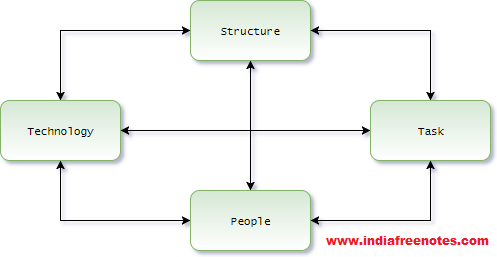Planned Change
30/03/2020One of Newton’s laws is that “bodies in motion tend to stay in motion; bodies at rest tend to stay at rest”. There is an organizational version of this truth. Those who believe in growth and forward movement tend to be exemplars of change, while those who believe in this is how we do things around here” lead to doom. Therefore, bringing change in a planned manner is the prime responsibility of all managers who are forward looking. Planned change aims to prepare the total organization, or a major portion of it, to adapt to significant changes in the organization’s goals and direction. Thomas and Bennis have defined planned change as follows:
“Planned change is the deliberate design and implementation of a structural innovation, a new policy or goal, or a change in operating philosophy, climate or style.”
Planned change attempts at all aspects of the organization which are closely interrelated: technology, task, structure, people as shown in fig:

-
Technology related Changes
Technology refers to the sum total of knowledge providing ways to do things. It may include inventions and techniques which affect the way of doing things, that is designing, producing, and distributing products. Technology-related changes may include:
- Changing problem-solving and decision-making procedures.
- Introduction of automated data processing devices like computers to facilitate managerial planning and control.
- Change in methods of production like conversation of unit production to mass production.
-
Task related Canges
Technology-related changes determine the types of task that may be required to complete an operation. However, what alternatives are chosen must consider the core job characteristics- skill variety, task identity, task significance, autonomy, and feedback from the job. Task-related changes must focus on:
- High internal work motivation
- High quality work performance
-
Structure related Changes
Structural changes redefine nature of relationships among various organizational positions and may include:
- Changing the number of Hierarchical levels.
- Changing one form of organization to another form
- Changing span of management
- Changing line-staff and functional authority
When structural changes are effected, these may affect the formal reporting relationships, formal interaction pattern, and consequently informal relations.
-
People related Changes
Changes of any type as pointed out above require changes in people in an organization. These changes may be of two types- skills and behavior. The magnitude of these changes depends on the type of change. For example, if there is a change in technology, say from manual to automated, it requires different type of skills in the operators as compared to the previously used skills. Similarly, changes in behavior and the socio-psychological factors determine behavior are required.
[…] VIEW […]